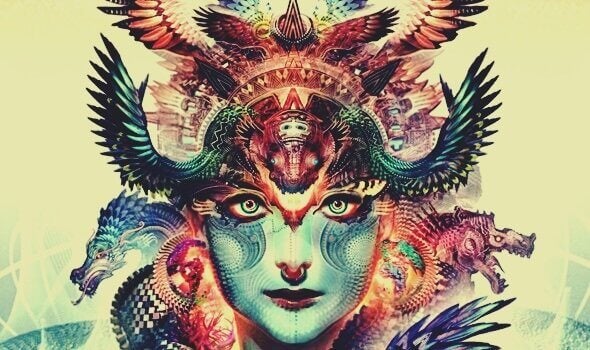Jung and archetypes are an exceptional legacy within analytical psychology, few authors have proposed such an innovative vision of the unconscious, capable of transcending the physiological and pathological, to reveal to us the existence of certain figures or models inherited from behaviors that inhabit our minds and that determine behavior and thought.
To understand more simply what an archetype is, let’s think of a very current figure in today’s movies: Heroes. Everyone, in a moment, had our favorites; complex characters, but who essentially respond to the same pattern, to the same concept: good, evil, wisdom and lies, for example.
- Many of these characters symbolize Carl Jung’s most classic archetypes.
- The same ones that.
- In turn.
- Govern our behaviors and decisions in ourselves.
- This idea.
- In itself.
- Is interesting in many ways.
“Won’t your vision be revealed more clearly than when you look from the heart?The one who looks out dreams. Anyone who’s looking inside wakes up. ?-Carl Jung-
First, if we understand that such figures inhabit our unconscious one generation after another, as a kind of psychic heritage, it implies, for example, that we do not reach this world as on a “virgin slate”, as the philosopher John Locke would say.
In this collective unconscious that we all share regardless of our culture, there have been the same impulses, needs, characteristics with more or less predominance.
On the other hand, one aspect that Carl Jung recalls is that although we all have this kind of “collective soul”, our responsibility and purpose as an individualization is individualization. Then it would be a forced process where we develop an individual consciousness, where we shape a strong, healthy and full psychic image of ourselves.
When Carl Jung entered the University of Basel in 1895 to study natural sciences and medicine, he began to have a recurring dream, he saw himself fighting a kind of dark and thick fog, in the middle of this scenario, there was a great black figure Besides, he could also see how a light shone in the palm of his hands , an energy I wasn’t sure how to use.
A little later he concluded that this entity was his “shadow”, which contained his repressed fears, the weight of his past and many of his negative attitudes. The light in his hands represented an obligation to illuminate these dark or convulsive areas. As can be seen, few authors and figures of psychology have used this dreamlike world and its implicit language to make sense of human behavior so present.
In fact, one of its most illustrious theoretical heirs, the Jungian Michael Fordham, explains in a survey published in the magazine Ment Health that Jung and the archetypes were a first attempt to define our desire for self-realization.
He argues that only when we identify these archetypes that inhabit us and reveal their message, do we move forward; it is a step that will free us from our shadows, our fears and our anxieties to evolve into free and realized entities.
Therefore, let us know those figures of our psyche who were our collective soul.
In this link between the archetypes and Jung, the most relevant and widespread inheritance is the figure of the “Shadow”. We talked about it a short time ago and, without a doubt, we already have an idea of what her particular anatomy is:
Tackling our shadow and bringing it to light is a much-needed act of growth.
In the context of archetypes and Jung, the figure of Persona is one of the most interesting, we face a ‘psychic shield’, which we use to protect our ego from the outside world.
The Archetype of the Father integrates a great deal of psychic and social forces: it is law, discipline, authority, protection, love, etc. , symbolizes an inner figure who acts as a teacher and who must help us achieve our goals.
The archetype of the Mother is the one who can feed us the most in each of our skills and skills in life, symbolizing attention, encouragement and universal love. It is this impulse that always encourages our success, that nourishes us in complicated moments, providing your affection and motivation.
Within this chain of Jung archetypes, this figure is the great deity, it is the myth and entity that has always appeared in culture and nature as the creator of all things, as the wise and supportive essence where magic and spirituality guide us at all times. .
Jung’s archetypes are a legacy of all relevance that the world of artificial intelligence uses to develop its technological advances in the world of robotics.
In conclusion, the archetypes described here are the most relevant within Carl Jung’s theory of collective unconsciousness, however, we may have the idea that this theory is closer to a mythological context, in a type of archaic psychology that today lacks interest and applicability.
On the other hand, it is worth saying that this model of archetypes is used in the world of cybernetics and robotics. MIT engineers, like Peter Senge, rely on these ideas to program artificial intelligences and equip them with the “personality” of robots of the future. Definitely a very interesting topic where Carl Jung’s name is still very current.

